
Muiden Castle is a castle in the Netherlands, located at the mouth of the Vecht river, some 15 kilometers southeast of Amsterdam, in Muiden, where it flows into what used to be the Zuiderzee. It is one of the better known castles in the Netherlands and featured in many television shows set in the Middle Ages.

Heeze Castle is situated in the Netherlands, south of Eindhoven. It used to be the centre of the seigneury of Heeze, Leende and Zesgehuchten, part of the Duchy of Brabant. In the Middle Ages, it was owned by the de Horne family. In the seventeenth Century Pieter Post designed a new castle, of which the first part was built in 1665. After Pieter Post died, the work was completed by his son Maurits Post.

A rijksmonument is a national heritage site of the Netherlands, listed by the agency Rijksdienst voor het Cultureel Erfgoed (RCE) acting for the Dutch Ministry of Education, Culture and Science.

Rijkswaterstaat, founded in 1798 as the Bureau voor den Waterstaat and formerly translated to Directorate General for Public Works and Water Management, is a Directorate-General of the Ministry of Infrastructure and Water Management of the Netherlands. Its role is the practical execution of the public works and water management, including the construction and maintenance of waterways and roads, and flood protection and prevention. The agency was also involved in the construction of big railway projects such as the Betuweroute and the HSL-Zuid.
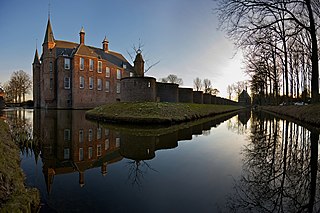
Zuylen Castle is a Dutch castle at the village of Oud-Zuilen just north of the city of Utrecht. It is located along the river Vecht at the southern end of the Vechtstreek.

Egmond Castle, also called the Ruins of Egmond, is a ruined medieval castle in the Dutch province of North Holland. It is located in Egmond aan den Hoef in the municipality of Bergen and lies about 7 kilometres (4.3 mi) west of Alkmaar. The castle dates from the 11th century and is the ancestral seat of the Egmond family, whose members became sovereign Dukes of Guelders, Counts of Egmond and Princes of Gavere, Counts of Buren and Leerdam. It is a national monument of the Netherlands.
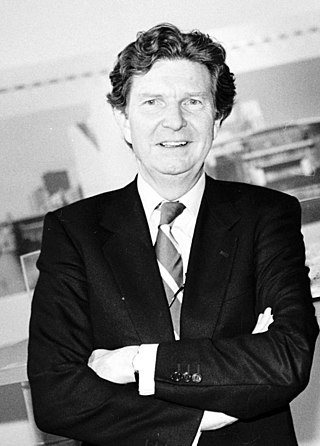
Hubert-Jan Henket is a Dutch architect. He is a specialist in the relations between old and new buildings, the redesign of buildings, renovation and restoration. He is the founder of DOCOMOMO international.

Keppel Castle is a castle in the town of Laag-Keppel in the municipality of Bronckhorst, in the Dutch province of Gelderland. The castle stands on an island between two branches of the Oude IJssel. The current building was rebuilt in the 17th century after it was destroyed in 1582.

Heusden Castle is a ruined major castle in Heusden.

Aldendriel Castle is late medieval castle in Mill, North-Brabant, Netherlands
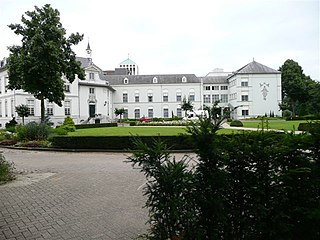
Boxmeer Castle is an originally 13th century castle in Boxmeer, North-Brabant, Netherlands. It is situated on a former island in the Meuse.

Polanen Castle was a castle located in today's Monster, South Holland in the Netherlands. The ancestral home of the Polanen family, it suffered a siege in 1351 and was demolished in 1394. It was replaced by a small manor somewhat to the south.
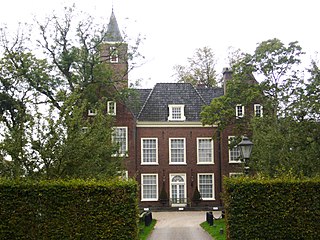
Binckhorst Castle is a 16th and 17th century manor built on top of a demolished medieval castle.

Spangen Castle was a medieval castle near the village Overschie. It has disappeared completely. The Rotterdam city quarter Spangen was named for the castle.
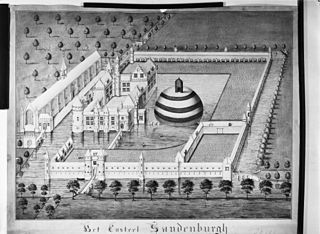
Zandenburg was a famous castle just south of Veere. Nothing remains of it, except some foundations below ground level.

Hellenburg is a ruined castle near Baarland, in Zeeland, Netherlands.

Sint-Maartensdijk Castle was a castle with a rich history. Except for a part of the moats nothing remains of it.

Windenburg was a rather typical small castle in Dreischor, the Netherlands.
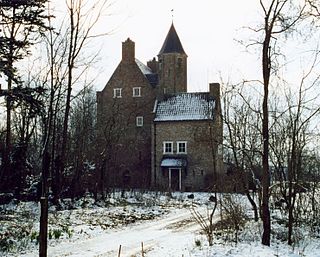
Sabbinge Castle is a small castle in Oud-Sabbinge, on the former island Wolphaartsdijk























